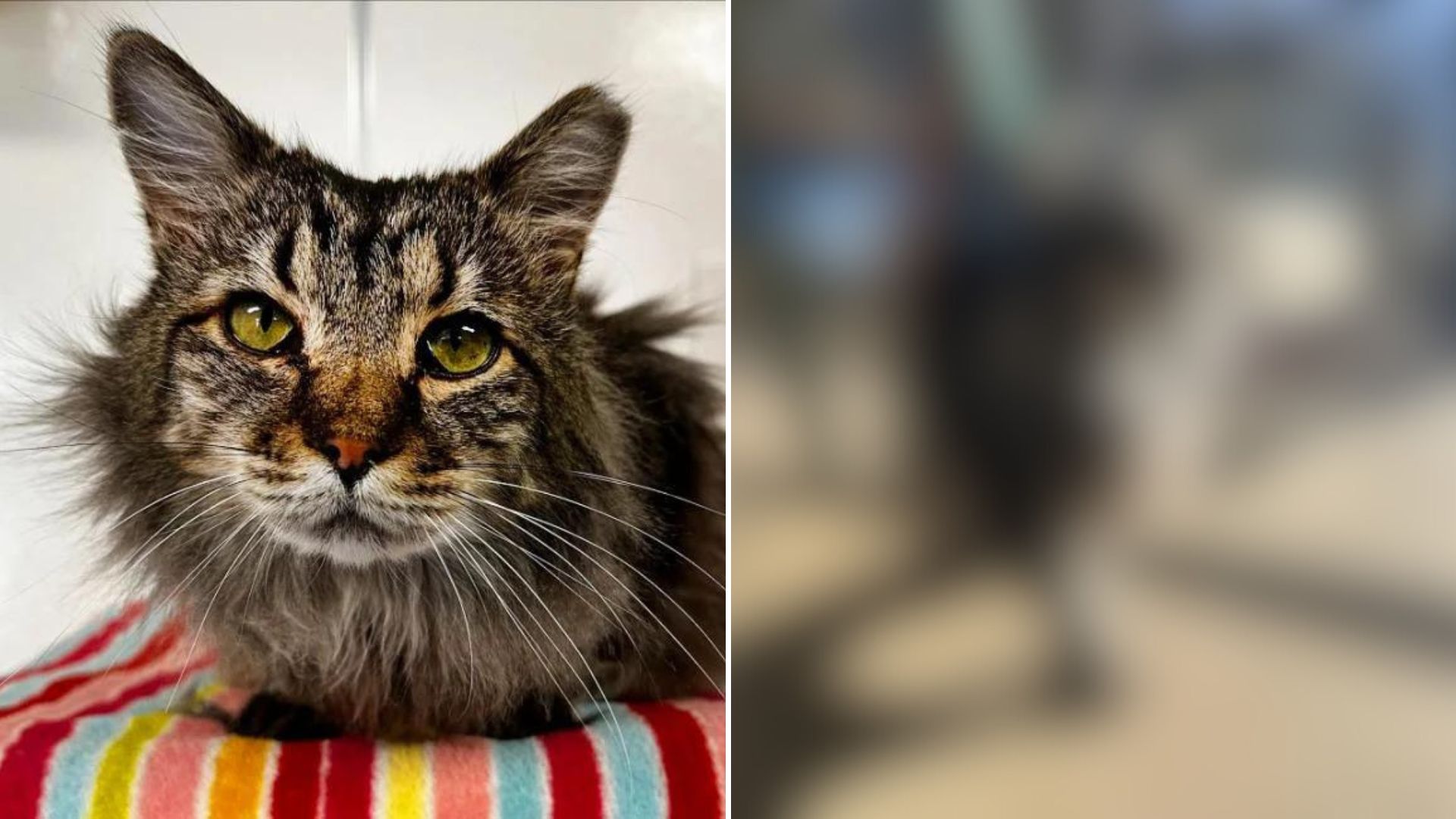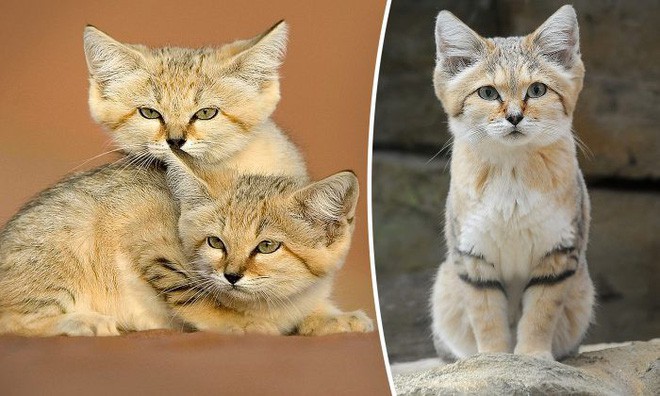
The sand cat (Felis margarita) or dune cat is a species of cat that lives in the desert regions of Africa and Asia. They live in dry lands, even so dry that even African wild cats cannot withstand, such as the Sahara Desert, the Arabian Desert, the deserts of Iran and Pakistan.
Assistant scientist Shakeel Ahmed and a team of colleagues from the Abu Dhabi Environment Agency began searching for and photographing the cats in March 2015 after the last reported sighting in 2005.
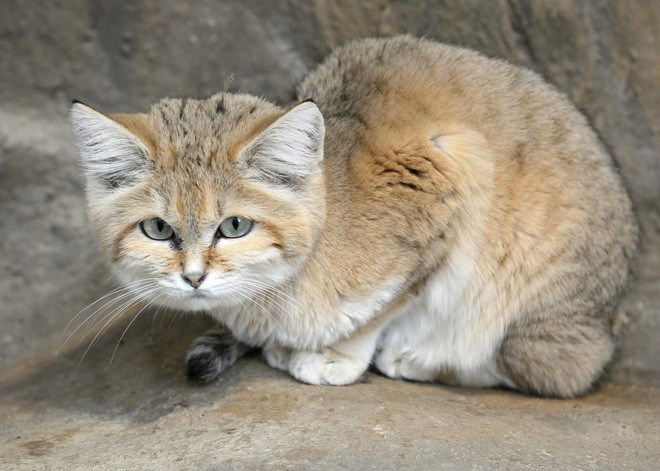
The sand cat was first described in Victor Loche’s Catalog des mammifères et des oiseaux published in 1858. The name Felis margarita was given by Loche in honor of Jean Auguste Margueritte, the leader of the expedition in which Loche came into contact with the cat.
The Arabian Sand Cat is a nocturnal animal and usually stays in its burrows during the day to avoid the harsh sunlight. Its fur is also the same color as the sand it lives in, making it invisible and very difficult to detect.
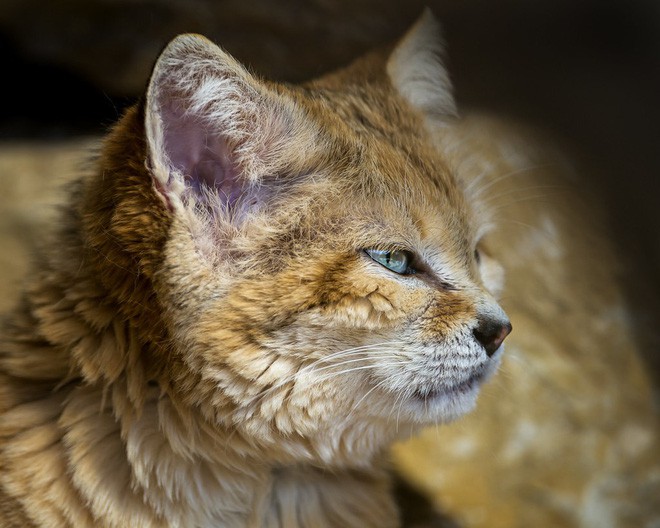
They are known as the “forever young” cat breed because of their cute appearance from childhood to adulthood, always maintaining the appearance of a kitten.
They look quite similar to domestic cats but are distinguished by the thick fur around their ears and under their paws, which allows them to walk freely without leaving any traces in the sand.
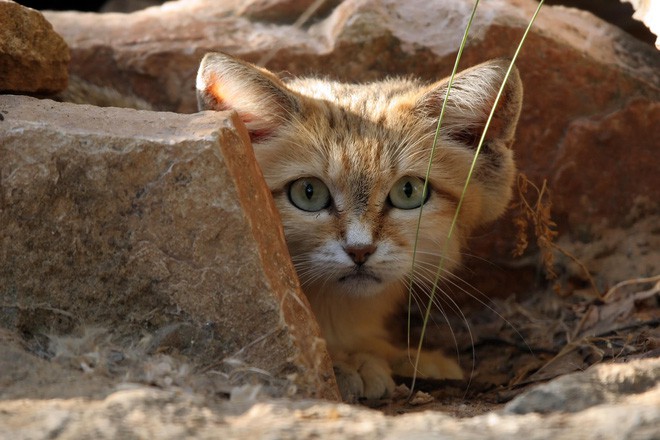
Sand cats are quite small and stocky with short legs, a long tail and very large, pointed ears. Their head and body length ranges from 39 to 57 cm, plus a tail of about 23 to 31 cm. Sand cats weigh between 1.4 and 3.4 kg.
To capture these images, Shakeel Ahmed and his team designed traps that attracted them harmlessly using chicken and fish-flavored cat food around a motion detection trail in Baynouna, Abu Dhabi.
Over 278 nights of trapping, they took 46 photos and identified three different sand cats, one of which was determined to be male. The cats were seen most often between 0:00 and 6:00 a.m., and 39% of those sightings were during the full moon.
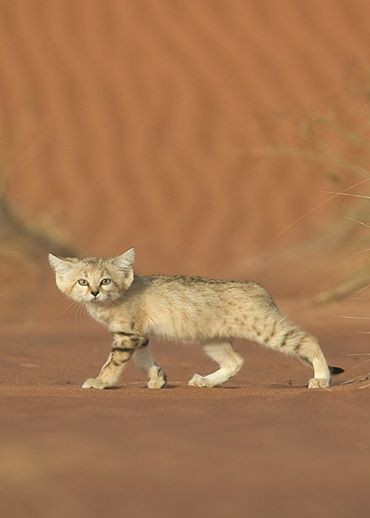
Unlike other Asian cats, the sand cat has dense fur between its toes, which creates a thick layer of insulating fur that helps protect it from burns when walking on sand. The claws on the hind legs are quite small and blunt, combined with the thick fur covering the pads of the feet, making the sand cat’s footprints difficult to detect by predators.
One very interesting thing is that this cat does not need to drink water because it is fully hydrated from its food such as small birds, reptiles and small mammals.
This mysterious cat is classified as a threatened animal on the International Union for Conservation of Nature’s Red List, and is also an endangered species in the United Arab Emirates.
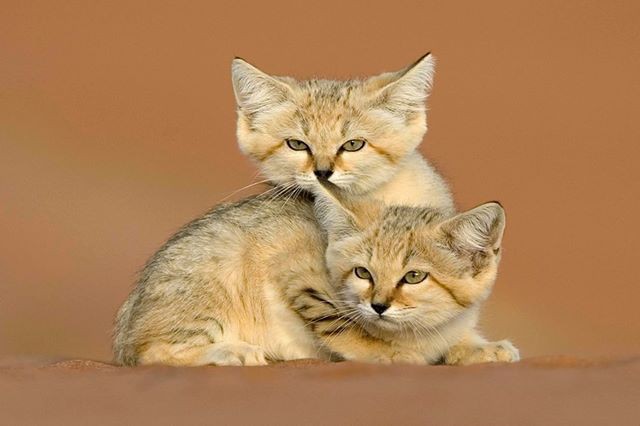
Sand cats can survive in temperatures ranging from −5 degrees Celsius to 52 degrees Celsius and will retreat into their burrows during inclement weather.
Because this breed of cat is very shy and extremely difficult to encounter, scientists still do not have much information about them.
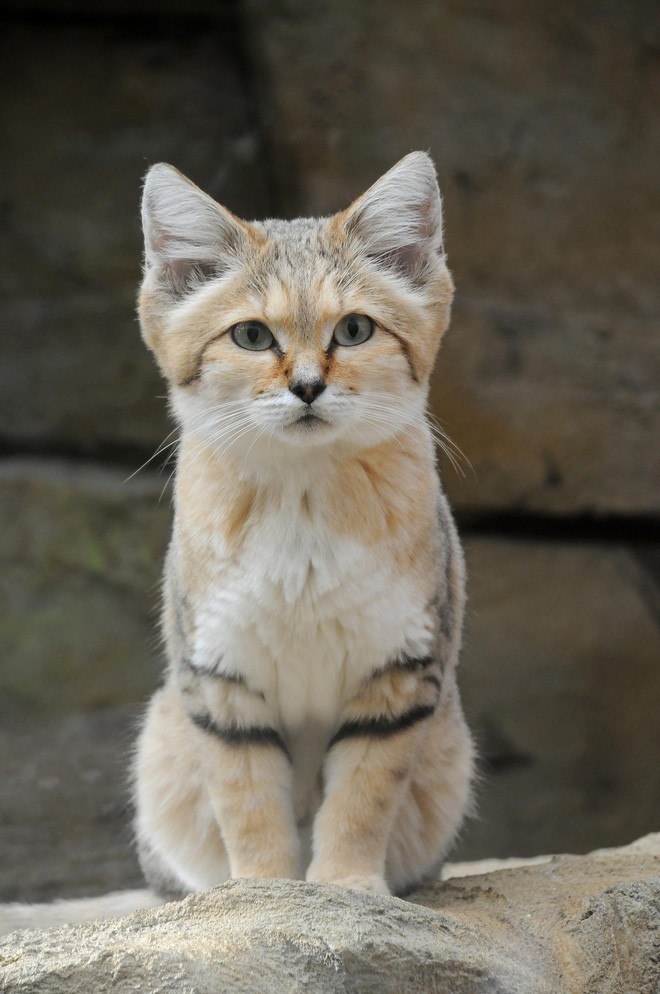
Their heads are very broad and their ears are so large that they can be spread horizontally and even pointed downwards for hunting. Their coat is a pale yellow, like sand, with barely visible yellow-green stripes; their chins and bellies are white.




